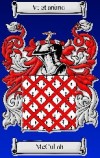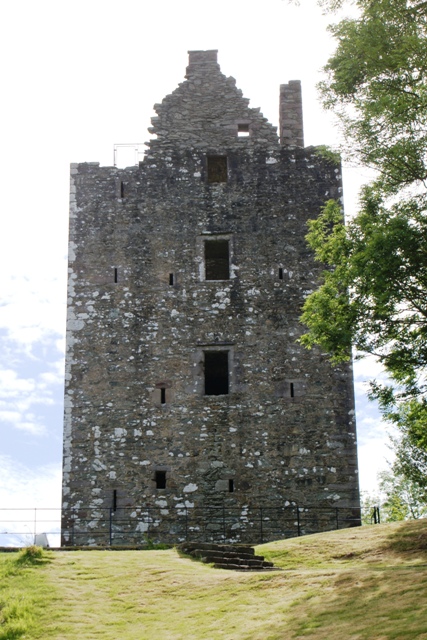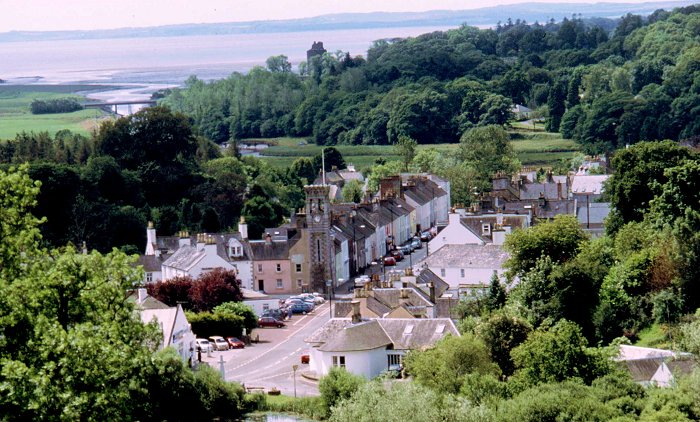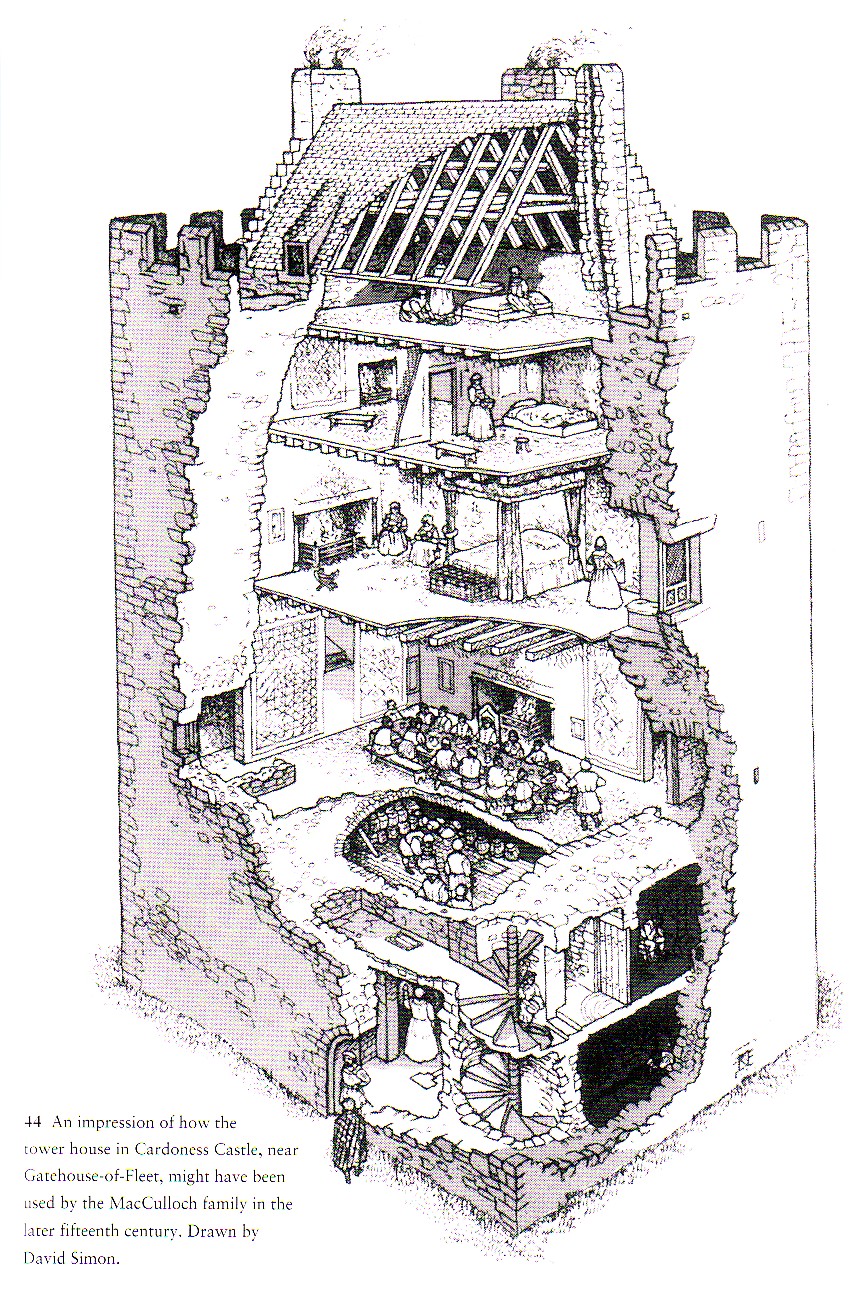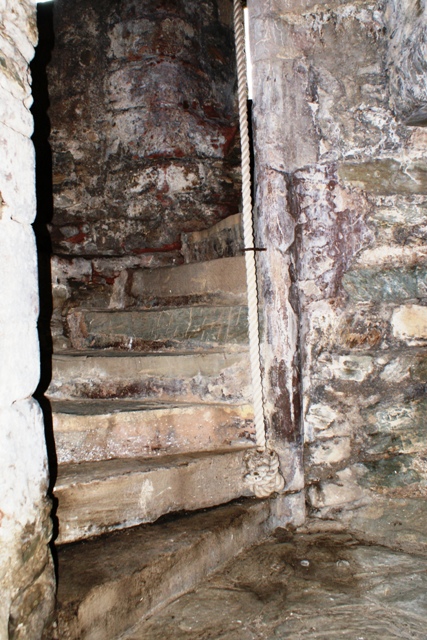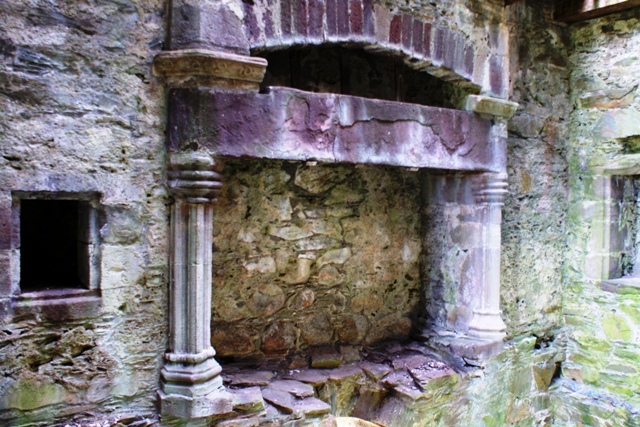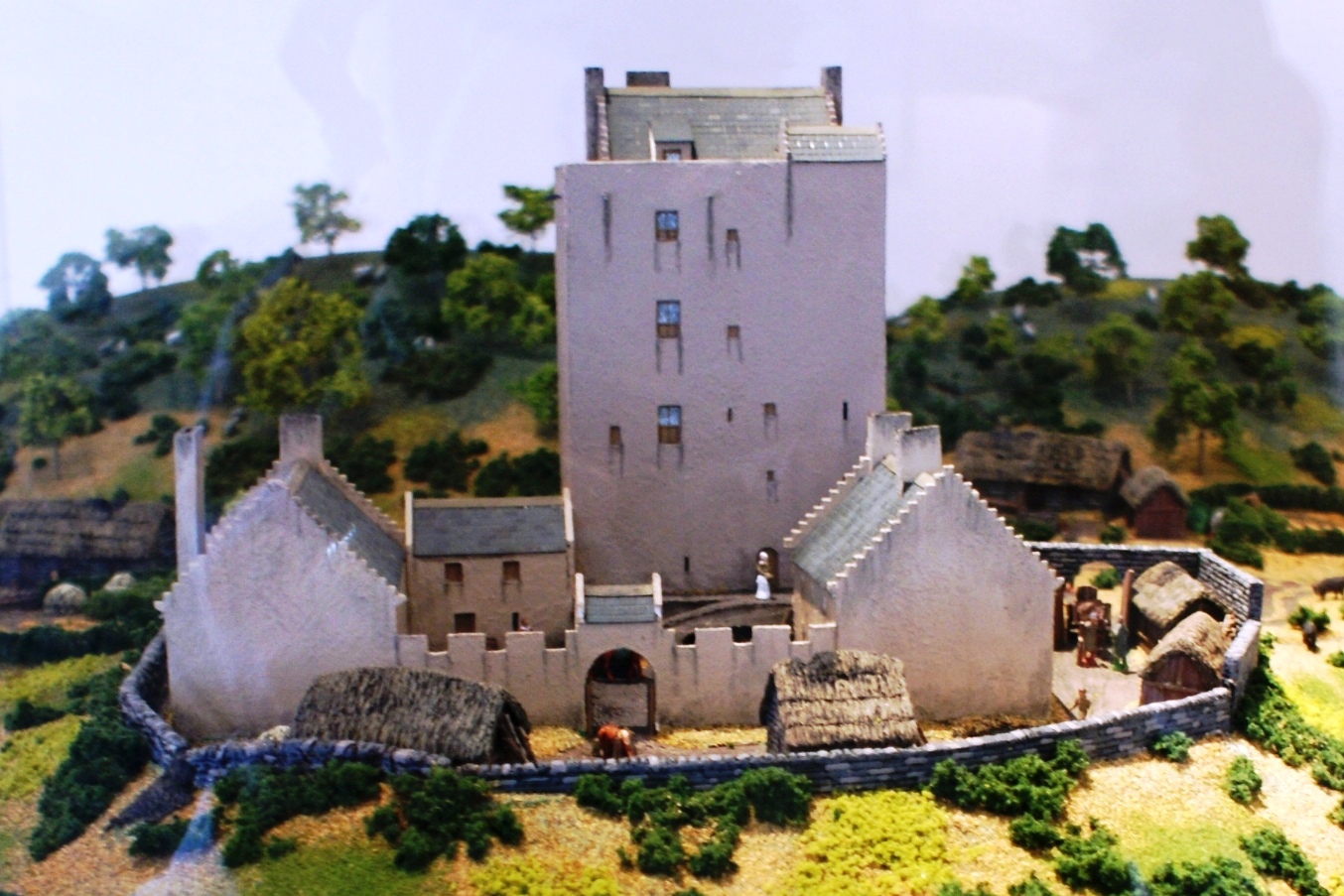Cardoness Castle
Cardoness Castle
by Rodney McCulloh
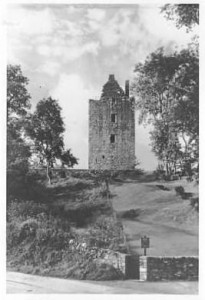 I remember as a boy of maybe 10 or 12, Grandpa Charles McCulloh, Sr. gave me a black and white photograph of the “McCulloh Castle.” The castle was Cardoness Castle and I treasured that photo. As it turns out the McCulloh’s were actually associated with at least five castles in Scotland. But, before you read further, remove from your mind images of Edinburg Castle and the famous Cinderella (Liechtenstein) Castle in Germany; our castles were not quite so grand. Even so, as a child it seemed an incredible thing to know our ancestors had actually lived in a castle, even if it didn’t quite look like a castle! Grandpa never got to visit the castle and he didn’t know very much about it, only what he was able to learn from a very brief description in a tour guide he had obtained. It wasn’t until many years later that I learned some of the history and legends surrounding this castle.
I remember as a boy of maybe 10 or 12, Grandpa Charles McCulloh, Sr. gave me a black and white photograph of the “McCulloh Castle.” The castle was Cardoness Castle and I treasured that photo. As it turns out the McCulloh’s were actually associated with at least five castles in Scotland. But, before you read further, remove from your mind images of Edinburg Castle and the famous Cinderella (Liechtenstein) Castle in Germany; our castles were not quite so grand. Even so, as a child it seemed an incredible thing to know our ancestors had actually lived in a castle, even if it didn’t quite look like a castle! Grandpa never got to visit the castle and he didn’t know very much about it, only what he was able to learn from a very brief description in a tour guide he had obtained. It wasn’t until many years later that I learned some of the history and legends surrounding this castle.
Cardoness Castle, the most famous of the five castles, is located on a rocky ridge along the River Fleet Estuary in Gatehouse of Fleet, Kurcudbrightshire in southern Scotland. Cardoness is of the tower-house design. The castle is 56-feet tall to the battlements and is six stories tall including vaulted lower levels. The total floor space of the castle is 3,444 sq. ft. The walls at the ground floor are 10-feet thick with a single entrance door and the upper floors have only a few small windows. “Gun-loop” openings intended for the defense of the castle with hand-guns exist in the exterior walls and Cardoness was one of the earliest castles to incorporate this feature. The castle even had its own prison room and a dungeon! It was always difficult for me, when looking at the castle photograph, to visualize how a six story castle “worked.” Was it just a big tall space? How did a family live in a building like this? What was in there? Well, a picture is worth a thousand words and the cut-away illustration by David Simon, from the book, Scotland’s Castles, by Chris Tanbraham, answers a lot of questions.
The illustrated roof structure, which is long gone, finally makes sense of the triangular stone structures, visible in most photographs, jutting up from the top of the main rectangular building. A spiral staircase in one corner of the building serves all the floors and beautiful stone fireplaces, cupboards and window seats are still preserved in the castle. In June, 2010 my wife Elisha and I had the pleasure of spending three days in Gatehouse of Fleet. We took many photos of the inside and the outside of the castle as well as photos of a marvelous model in the visitor center of what the grounds would have looked like with all of the outbuildings and courtyard walls in place. You can view a slide show of these Cardoness Castle photos here. As you view the photos you will notice that not only is the roof gone but all of the floors are gone as well with the exception of the third floor which housed the main hall with its large fireplace. Even so you can still climb the spiral stair all the way to the top where the views are magnificent!
There are various historical accounts surrounding the origin of the castle. I suppose the question now before us is whether our line actually descends from these MacCulloch’s of Galloway? It is certainly possible but to the best of my knowledge our line has not been traced back past the arrival of Archibald McCulloh from Ireland to America in the 1740’s. Oh, but isn’t it fun to imagine?
Cardoness castle was a MacCulloh stronghold for over 200 years and was built in around 1475 by James MacCulloch. Why was the MacCulloch stronghold named “Cardoness”? Cardoness appears to be the name of another ancient family which either owned the land before the MacCullochs owned it or at some later date. The following delightful legend, which surrounds the early history of the castle, provides one possible answer:
The Robber Laird with Nine Daughters
In ancient days a wild laird had spent his entire fortune in the construction of Cardoness Castle. Though the walls were magnificent, it was roofed with heather: there was money for no more. His neighbours were amused, and enemies set fire to it with flaming arrows. Seeking to fill his coffers once more, the laird joined a band of reivers – thieves and border raiders who acknowledged no law. He was as fierce as the best of them, and soon his chests were filled with gold and silver coin, overflowing with rich communion cups and ropes of pearl and other plunder.
Once he had enough he bade farewell to the band of robbers and retired to his great estate. The building was completed; his creditors – those bold enough to insist – were paid; he was lord of all he surveyed. Ahough everything should now have been happiness and plain sailing, it was not. He longed for a son, but as year followed year his wife presented him with an endless succession of daughters. There were nine of them –sometimes it seemed like ninety.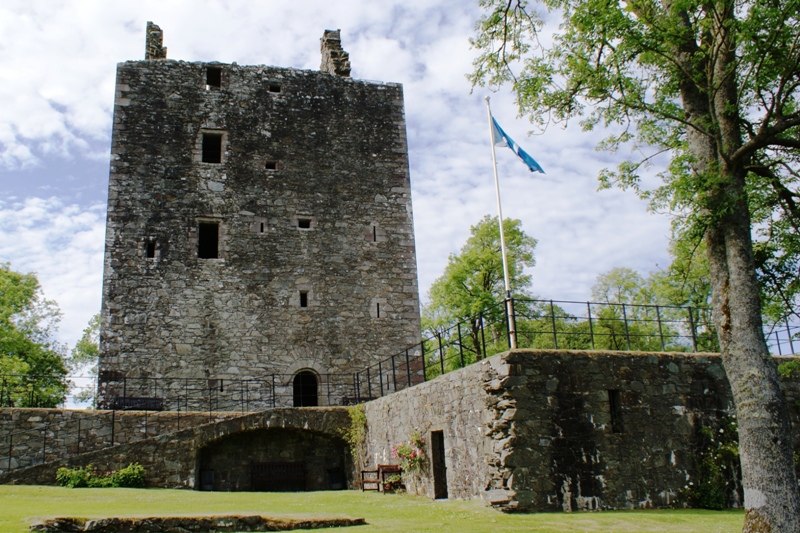
Then a tenth time his wife was with child, and yet again his hopes rose.
One morning in January, just before his wife’s confinement, he burst into her room, and with the passionate ferocity of his reiving days informed her that if this time she did not present him with the son he desired, he would take herself and the baby and the other nine useless daughters, and drown the lot in the deep Black Loch on the estate. Then he would find himself a wife who knew how to have sons!
His wife was terrified, for she knew that he was perfectly capable of doing what he said. How great was her relief when this time her prayers were answered, and two or three weeks later the howdy (midwife) who was attending her held up a wriggling baby son.
The robber laird was delighted and his joy infected the whole neighborhood. By way of celebration he ordered a great midwinter feast to be prepared on the thick ice of the Black Loch. Everyone was invited.
On a bright Sunday morning, with the air biting cold though the sun shone cheerfully, the festive crowds converged on the loch through the snowy trees. The laird was there with his wife and baby son, and all his daughters save one –who was ill and had to be left behind at the castle in the charge of the nurse. Servants carried heavy salvers of roasted venison from the shore, ale was mulled by glowing braziers, musicians played, young couples danced, fat farmers’ wives fell to the ice with shrieks of merriment.
Suddenly, when the gaiety and feasting were at their height, the ice snapped with a fearful ringing, splitting sound, and all those at the heart of the throng vanished from sight into the loch –the wicked laird, his wife and son, and everyone one of the daughters.
For a moment, as guests scrambled madly for the safety of the shore, the faces and bonnets of the laird’s family were glimpsed in the icy, tumbled water. But when they looked back from the snowy brink the loch was empty, save for the shattered grey ice and the remnants of the feast.
The entire estate fell to the single surviving daughter – one of those so contemptuously dismissed by the laird. Several years later, when the girl had grown into an attractive young woman, she married a man named MacCulloch. Thus it was that the splendid castle and rich lands of Cardoness came into the hands of that great Galloway family.
While writing this article I was delighted to discover two sermons delivered in 1894 by Alexander Whyte in Edinburgh, Scotland. These sermons refer to the puritan preacher Samuel Rutherford who ministered to the castle’s owners, John Gordon and his wife Lady Cardoness, in the mid 1600’s. They are well worth reading and give us another glimpse into the history of Cardoness Castle.
Sermon: Lady Cardoness
Sermon: Gordon of Cardoness, The Younger
The following articles contain excellent detailed descriptions and the history of the Castle:
Cardoness Castle edited and illustrated by J. S. Fleming, published 1909
Cardoness Castle by MacGibbon and Ross, published as a chapter in the book Castellated and Domestic Architecture of Scotland… vol. 1 – 1887
—————————————–
Sources:
Tales of Galloway – 1979, Skilton & Shaw, London
The Descendants of Captain John McCollough (1770-1847) And Anna Elizabeth Spangler (1779-1858) – 2006, Mark and Curtis McCollough
The Fortified House in Scotland – edited by Nigel Tranter, vol 3
Copyright 2006

